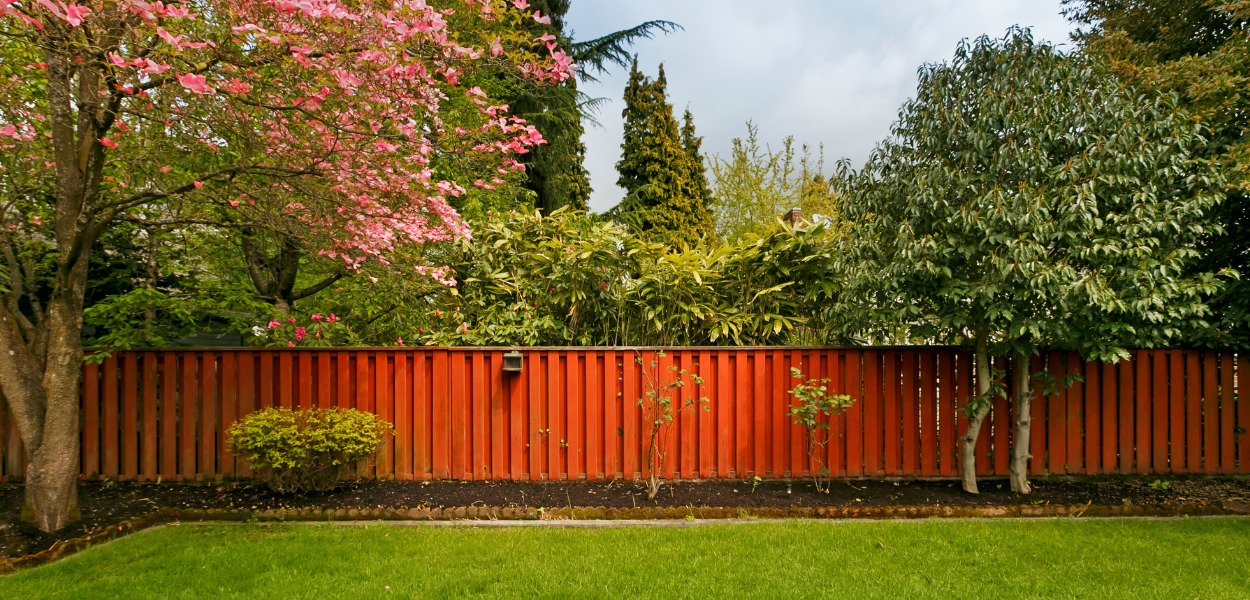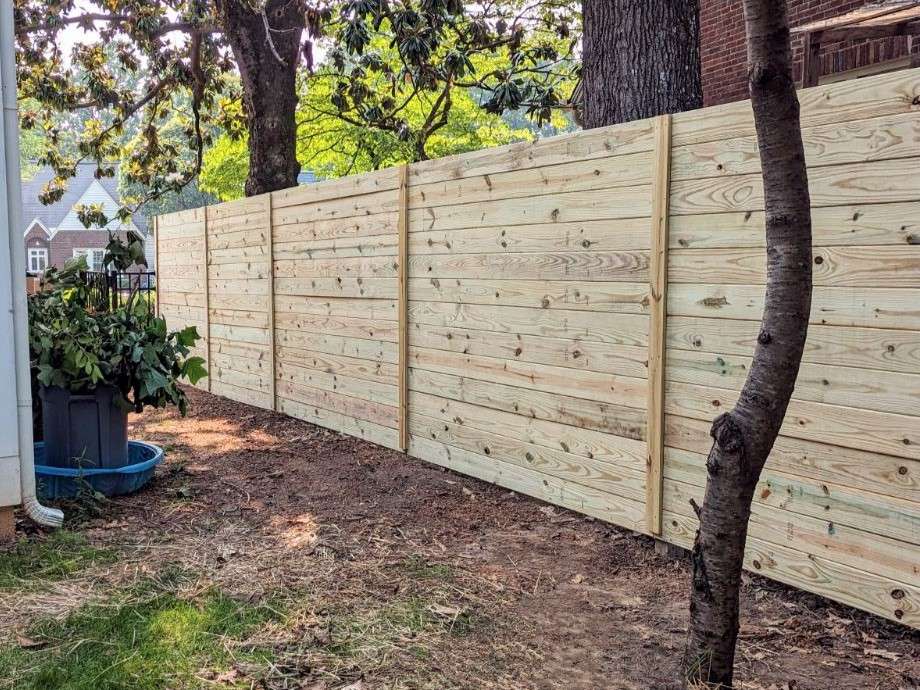All Categories
Featured
When it involves protecting your building, choosing the appropriate fencing elevation is a critical choice. An effectively chosen fencing can work as an effective deterrent versus intruders and improve the overall safety of your home or business. But picking the appropriate elevation involves numerous factors, consisting of regional regulations, your certain safety requirements, and the sort of fencing you are considering. Right here's a detailed overview to aid you figure out the ideal fence height for protecting your home.
![]()
In many cases, home owners might need a license to build a fencing over a specific elevation. To stay clear of legal issues or penalties, always consult your regional authorities prior to proceeding with setup. In addition, if you live in a community controlled by a homeowners' organization (HOA), be certain to examine their guidelines, as they may have certain regulations regarding fencing elevation and layout.
In more risky areas, or if you have beneficial building or are dealing with safety concerns, you may intend to take into consideration an even taller fence-- approximately 8 feet or higher. A taller fence is extra frightening to possible trespassers and offers a far better physical barrier. If you wish to go even further, take into consideration including security attributes like razor cable, electrical secure fencing, or sharp lattice tops, which can make the fence even much more difficult to breach.
Wood Fences: Wood fencings offer personal privacy, however they can be reasonably very easy to climb. An elevation of 6 to 8 feet is advised for adequate security. To boost prevention, think about adding pointed tops or installing a trellis with climbing plants. Wrought Iron Fences: Wrought iron fencings are sturdy and difficult to climb. They're commonly made use of for higher-security functions and can be built in between 6 to 8 feet high. The vertical bars, particularly when topped with factors or spikes, serve as an awesome obstacle. Chain-Link Fences: A chain-link fence that's 6 to 8 feet high can give a cost-effective and useful option. Adding features like barbed cable or razor cable on top can boost protection dramatically. Plastic Fences: Plastic fences can likewise use privacy and safety, yet like wooden fences, they may need extra elevation and features to avoid climbing up. A solid vinyl fence of 6 to 8 feet in height can be really efficient at maintaining unwanted visitors out. 4. Privacy vs. Safety. If your primary worry is privacy, a taller, solid fencing (like timber or vinyl) might be the very best choice. Taller fencings block the view from the outdoors, ensuring that intruders can not easily assess your property or place valuables. Privacy fences of 6 to 8 feet are common for this objective.
Nonetheless, if security is more of a concern than personal privacy, you could desire to select a fence product that provides presence, such as chain-link, while still being tall sufficient to deter climbing up. The benefit of this method is that it allows you to keep an eye on task outside your residential property and make it harder for someone to strategy unnoticed.
![]()
Anti-Climb Features: Installing anti-climb spikes or trellis expansions on top of your fence will certainly make it also a lot more difficult for trespassers to scale it. These can be especially effective on wooden or vinyl fences. Razor Cable or Barbed Cable: If security is a significant worry, adding razor wire or barbed cord to the top of your fencing is a very reliable deterrent. These attributes can be incorporated with a solid wood or chain-link fence for optimum protection. Electric Secure fencing: For increased security, electric fencing can be installed on top of an existing fencing. While these need special installment and a specialist to make certain safety, they can be extremely efficient in avoiding unapproved accessibility to your building. 6. Visual Considerations. While safety and security is the key objective, it's also essential to consider exactly how the fence will certainly look. Some neighborhoods or neighborhoods may have visual criteria or HOA standards, so selecting a fencing that matches your residential property's design while still giving safety and security is necessary. Going with a fence that blends right into the environment and fits the architectural style of your home can make sure that your fence is both functional and aesthetically attractive.
Verdict. When choosing a fencing elevation for optimal security, objective for an equilibrium between height, product, and additional safety attributes to ideal fulfill your demands. An elevation of 6 to 8 feet is generally enough for the majority of residential properties, but if you live in a high-risk area or have particular security problems, taller fencings with included functions like spikes or electric systems might be necessary.
- Understand Neighborhood Regulations and Regulations. Before you purchase a new fence, it's necessary to understand the neighborhood zoning regulations and structure codes that might dictate the maximum elevation for fences in your area. Several districts have limitations on the elevation of fences, particularly for front yards, where fencings are usually limited to 3 to 4 feet. In yards, nonetheless, you might be enabled to build taller fences, commonly varying from 6 to 8 feet.

In many cases, home owners might need a license to build a fencing over a specific elevation. To stay clear of legal issues or penalties, always consult your regional authorities prior to proceeding with setup. In addition, if you live in a community controlled by a homeowners' organization (HOA), be certain to examine their guidelines, as they may have certain regulations regarding fencing elevation and layout.
- Consider the Degree of Safety And Security You Need. The elevation of your fencing straight correlates with the degree of security it gives. A fencing that's as well short might be very easy to climb up over or bypass, making it inefficient in keeping out intruders. For greater protection, go for a fencing elevation of a minimum of 6 feet, which is generally sufficient to avoid most individuals from conveniently scaling it.
In more risky areas, or if you have beneficial building or are dealing with safety concerns, you may intend to take into consideration an even taller fence-- approximately 8 feet or higher. A taller fence is extra frightening to possible trespassers and offers a far better physical barrier. If you wish to go even further, take into consideration including security attributes like razor cable, electrical secure fencing, or sharp lattice tops, which can make the fence even much more difficult to breach.
- Choose the Right Fence Material. Different fence materials give differing degrees of protection, and the height of the fence ought to be matched with the product's toughness. :
Wood Fences: Wood fencings offer personal privacy, however they can be reasonably very easy to climb. An elevation of 6 to 8 feet is advised for adequate security. To boost prevention, think about adding pointed tops or installing a trellis with climbing plants. Wrought Iron Fences: Wrought iron fencings are sturdy and difficult to climb. They're commonly made use of for higher-security functions and can be built in between 6 to 8 feet high. The vertical bars, particularly when topped with factors or spikes, serve as an awesome obstacle. Chain-Link Fences: A chain-link fence that's 6 to 8 feet high can give a cost-effective and useful option. Adding features like barbed cable or razor cable on top can boost protection dramatically. Plastic Fences: Plastic fences can likewise use privacy and safety, yet like wooden fences, they may need extra elevation and features to avoid climbing up. A solid vinyl fence of 6 to 8 feet in height can be really efficient at maintaining unwanted visitors out. 4. Privacy vs. Safety. If your primary worry is privacy, a taller, solid fencing (like timber or vinyl) might be the very best choice. Taller fencings block the view from the outdoors, ensuring that intruders can not easily assess your property or place valuables. Privacy fences of 6 to 8 feet are common for this objective.
Nonetheless, if security is more of a concern than personal privacy, you could desire to select a fence product that provides presence, such as chain-link, while still being tall sufficient to deter climbing up. The benefit of this method is that it allows you to keep an eye on task outside your residential property and make it harder for someone to strategy unnoticed.
- Enhancing the Security with Additional Features. The elevation of your fencing is just one aspect of your overall security method. Take into consideration integrating added functions to improve its effectiveness:

Anti-Climb Features: Installing anti-climb spikes or trellis expansions on top of your fence will certainly make it also a lot more difficult for trespassers to scale it. These can be especially effective on wooden or vinyl fences. Razor Cable or Barbed Cable: If security is a significant worry, adding razor wire or barbed cord to the top of your fencing is a very reliable deterrent. These attributes can be incorporated with a solid wood or chain-link fence for optimum protection. Electric Secure fencing: For increased security, electric fencing can be installed on top of an existing fencing. While these need special installment and a specialist to make certain safety, they can be extremely efficient in avoiding unapproved accessibility to your building. 6. Visual Considerations. While safety and security is the key objective, it's also essential to consider exactly how the fence will certainly look. Some neighborhoods or neighborhoods may have visual criteria or HOA standards, so selecting a fencing that matches your residential property's design while still giving safety and security is necessary. Going with a fence that blends right into the environment and fits the architectural style of your home can make sure that your fence is both functional and aesthetically attractive.
Verdict. When choosing a fencing elevation for optimal security, objective for an equilibrium between height, product, and additional safety attributes to ideal fulfill your demands. An elevation of 6 to 8 feet is generally enough for the majority of residential properties, but if you live in a high-risk area or have particular security problems, taller fencings with included functions like spikes or electric systems might be necessary.
Latest Posts
Secure Your Financial Investment with Specialist Gutter Installment
Published en
1 min read
Learn How to Reduce Expenses on Car Maintenance with Montclare Auto Repair’s Limited-Time Deals
Published en
1 min read
Identifying When Your Car Needs Skilled Vehicle Service at Montclare Auto Repair
Published en
1 min read
More
Latest Posts
Secure Your Financial Investment with Specialist Gutter Installment
Published May 26, 25
1 min read
Learn How to Reduce Expenses on Car Maintenance with Montclare Auto Repair’s Limited-Time Deals
Published May 23, 25
1 min read
Identifying When Your Car Needs Skilled Vehicle Service at Montclare Auto Repair
Published May 23, 25
1 min read